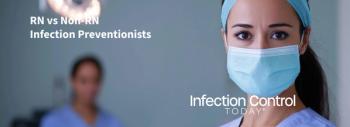
Study Finds Risk of Death Among ICU Patients With Severe Sepsis Has Decreased
In critically ill patients in Australia and New Zealand with severe sepsis or septic shock, there was a decrease in the risk of death from 2000 to 2012, findings that were accompanied by changes in the patterns of discharge of intensive care unit (ICU) patients to home, rehabilitation, and other hospitals, according to a study appearing in JAMA. The study is being released early to coincide with its presentation at the International Symposium on Intensive Care and Emergency Medicine.
Severe sepsis and septic shock are the biggest cause of death in critically ill patients. Over the last 20 years, multiple randomized controlled trials have attempted to identify new treatments to improve the survival of these patients, according to background information on the article. It is unknown whether progress has been made in decreasing mortality.
Kirsi-Maija Kaukonen, MD, PhD, EDIC, of Monash University, Melbourne, Australia, and colleagues examined trends in mortality among 101,064 patients with severe sepsis or septic shock from 171 ICUs in Australia and New Zealand from 2000 to 2012.
The researchers found that absolute mortality from severe sepsis decreased from 35.0 percent to 18.4 percent during this time period, an annual rate of absolute decrease of 1.3 percent, and a relative risk reduction of 47.5 percent. The annual decline in mortality did not differ between patients with severe sepsis/septic shock and those with all other diagnoses.
The authors write that their study provides evidence that sepsis-related mortality has steadily decreased over time even after adjustments for illness severity, center effect, regional effects, hospital size and other key variables. "It is unclear whether any improvements in diagnostic procedures, earlier and broader-spectrum antibiotic treatment, or more aggressive supportive therapy according to severity of the disease contributed to this change. The observation that an equivalent improvement occurred in nonseptic patients supports the view that overall changes in ICU practice rather than in the management of sepsis explain most of our findings."
In an accompanying editorial, Declining Case Fatality Rates for Severe Sepsis, Theodore J. Iwashyna, MD, PhD, of the University of Michigan, Ann Arbor, and Derek C. Angus, MD, MPH, of the University of Pittsburgh, comment on the findings of this study: "Short-term [severe sepsis] mortality has declined to a level at which it no longer reflects the entire story of outcomes for patients with severe sepsis. Although the reduction in sepsis-related mortality is welcome, it makes the need for data on morbidity and longer-term outcomes all the more pressing. Even while awaiting confirmation of this mortality finding in other settings, the general challenge for research is clear. Clinical trials need to adopt longer-term morbidity measures, if only to have the power to be able to detect feasible effect sizes in new trials. Registries and benchmarking programs need to find low-cost ways to assess outcomes other than short-term mortality, if only to remain relevant. Critical care is improving for patients with severe sepsis and throughout the ICU, and clinicians and researchers must raise the standards and broaden measurement to continue such progress."
References: doi:10.1001/jama.2014.2637; doi:10.1001/jama.2014.2639
Newsletter
Stay prepared and protected with Infection Control Today's newsletter, delivering essential updates, best practices, and expert insights for infection preventionists.






